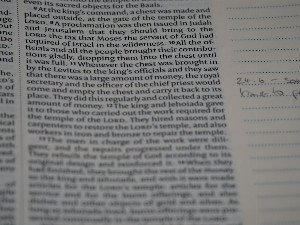Shelly Efwinda, Atin Nuryadin, Nurul Fitriyah Sulaeman, Ahmad Zaki Dzulfikar, Ahmad Syafi’i
Perceptions of Students Towards The Scientist-Teacher-Student Partnership (STSP) in Medical Physics Subjects
Introduction
Perceptions of students towards the scientist-teacher-student partnership (stsp) in medical physics subjects. Explore student perceptions of the Scientist-Teacher-Student Partnership (STSP) in Medical Physics subjects. This research highlights how STSP improves learning, interest, and contextual understanding for future physics teachers.
Abstract
Medical Physics is a branch of physics application that is developing very rapidly. Therefore, the contextualization of Medical Physics is crucial for future physics teachers. This research aims to implement Student-Teacher-Scientist Partnerships (STSP) in Medical Physics and explore students' perceptions of the learning experience through this program. STSP in this research involved prospective physics teachers as students, lecturers in medical physics courses as teachers, and medical physicists as scientists. The benefits of this research are to provide a learning experience of medical physics directly from experts (medical physicists) as a provision for prospective physics teachers to strengthen their knowledge of medical physics content and how to teach it, and to be a recommendation for learning strategies that support contextual physics learning. Implementing STSP in medical physics courses includes planning, implementation, and evaluation activities for one semester of lectures; lectures by the foremost scientists were held in 7 meetings (1 meeting = 2 x 60 minutes). The planning stage includes activities to equalize perceptions between scientists and related lecturers. The course was primarily student-centred, with case study discussions conducted online via Zoom meetings. The scientists were located in East Java Province, Indonesia, while the teachers and students were in East Kalimantan Province, Indonesia. The evaluation stage was carried out by exploring students' perceptions of the program implementation, the results of which can later be used as a reference for the continuation of the program implementation. Results indicated that STSP activities facilitated easier comprehension of medical physics, increased interest in further study, and highlighted connections between course topics and secondary school curriculum.
Review
This paper presents a timely and relevant exploration into the contextualization of Medical Physics for prospective physics teachers, a critical area given the rapid advancements in the field. The proposed Scientist-Teacher-Student Partnership (STSP) offers an innovative pedagogical model aimed at bridging the gap between theoretical knowledge and real-world application. By involving medical physicists directly, the research seeks to provide future educators with both strengthened content knowledge and practical insights into teaching complex subjects. The study's objective to implement this partnership and subsequently gather student perceptions is well-aligned with the goal of developing effective and engaging learning strategies for a specialized scientific discipline. A key strength of this research lies in its novel STSP framework, which facilitates direct engagement between prospective teachers and experts in Medical Physics. The implementation over one semester, including planning, direct instruction from scientists, and student-centred online discussions, demonstrates a thoughtful approach to overcoming geographical barriers and fostering active learning. The reported positive outcomes – facilitated comprehension, increased interest in further study, and highlighted connections to the secondary school curriculum – strongly suggest that the STSP model is effective in achieving its stated benefits. These findings provide compelling initial evidence for the value of such partnerships in enhancing specialized scientific education and preparing future teachers. While the abstract provides a strong overview of the STSP's design and initial positive impact, a more detailed account of the methodology for exploring students' perceptions would strengthen the overall contribution. Understanding the specific instruments or qualitative methods used for evaluation would allow for a deeper appreciation of the validity and nuances of the reported findings. Nevertheless, the study offers a valuable framework for integrating expert knowledge into teacher education and presents a promising model for contextual physics learning. This research serves as a robust recommendation for pedagogical strategies that foster deeper understanding and greater relevance in the teaching of Medical Physics.
Full Text
You need to be logged in to view the full text and Download file of this article - Perceptions of Students Towards The Scientist-Teacher-Student Partnership (STSP) in Medical Physics Subjects from Jurnal Pendidikan Fisika Indonesia .
Login to View Full Text And DownloadComments
You need to be logged in to post a comment.
Top Blogs by Rating
Genetic Dark Matter: The Unsee...
By Sciaria
The Immortal Jellyfish: Unlock...
By Sciaria
Beyond the Stereotype: Unpacki...
By Sciaria
Favorite Blog
Whispers from the Walls: Unloc...
By Sciaria
The Unseen Pillars: How Crypto...
By Sciaria
Your Dynamic DNA: The Adapting...
By Sciaria
Related Research
Investigating formulaic expressions in an informal youtube broadcast interview video
Effects of filtration techniques in identifying dissolved reactive phosphorus versus particulates in south tobacco creek watershed
Ympäristöliikkeen lisääntyvät oikeudelliset haasteet venäjällä
Share
Notice Board
- THE IMPACT OF RESERVOIRS ON RIVERS MORPHOMETRY, PRUT RIVER CASE STUDY
- REVOLUCIONANDO LA EDUCACIóN SUPERIOR: INTELIGENCIA ARTIFICIAL PARA EL APRENDIZAJE PERSONALIZADO Y LA TRANSFORMACIóN DOCENTE
- GEOPOLíTICA EN LA ERA DIGITAL: LA COMPETENCIA ENTRE EE. UU. Y CHINA A TRAVéS DE SUS NARRATIVAS SOBRE TECNOLOGíAS DIGITALES





